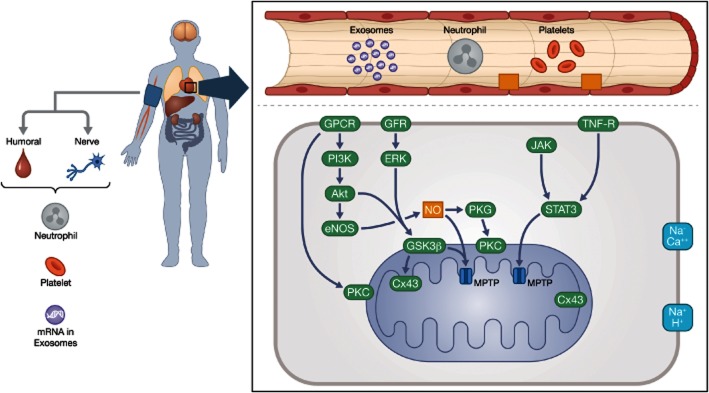Figure 1.
Simplified schematic presentation of the cytosolic signalling pathways that converge to prevent mitochondrial permeability transition pore (MPTP) opening in cardioprotection. eNOS/PGK: the nitric oxide-dependent GPCR–eNOS–PKG pathway; RISK: the reperfusion-injury salvage kinase pathway based upon PKB, PI3K-Akt and GSK3ß; and SAFE: the survivor activating factor enhancement signalling pathway involving the JAK-STAT system and TNF-α receptors. Proteins implicated in MPTP formation include the matrix cyclophilin D (CyD), the inner membrane adenine nucleotide translocase and the outer membrane voltage-dependent anion channel. Additional proteins such as the translocator protein 18 kDa (TSPO), located in the outer mitochondrial membrane, interact with proteins involved in MPTP formation. Under pathophysiological conditions, such as high Ca2+ concentration and increased oxidative stress, the complex forms an open pore between the inner and outer membranes that ultimately results in mitochondrial swelling, mitochondrial Ca2+ efflux and the release of apoptogenic proteins. Cyclosporin A targets matrix CyD, where Ca2+ overload triggers MPTP opening. TRO40303 binds to TSPO in the outer membrane. Other abbreviations: eNOS, endothelial nitric oxide synthase; GFR, growth factor receptors (insulin-like growth factor-1 and fibroblast growth factor-2); GSK3ß, glycogen synthase kinase 3ß; IMM, inner mitochondrial membrane; OMM, outer mitochondrial membrane; TNF-R, tumour necrosis factor receptor.

